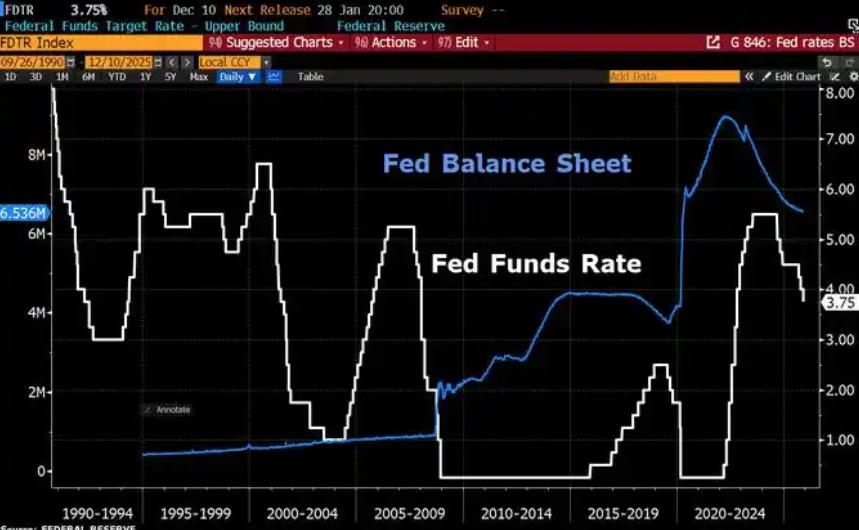
Recently, a piece of news that Trump pressured Powell of the Federal Reserve to resign was like a huge rock thrown into a calm lake, causing a huge stir in the financial market. Deutsche Bank has issued a warning that if Powell is forced to step down, US Treasury yields could rise sharply by 30 to 40 basis points, and global financial markets would face a huge shock. Behind this incident lies deep-seated contradictions in the US financial system and has also had a profound impact on the global financial landscape.
As the chairperson of the Federal Reserve, Powell plays a crucial role in the formulation of monetary policy. Trump's pressure on Powell stems from the differences between the two sides regarding the direction of monetary policy. Trump expects the Federal Reserve to cut interest rates significantly to stimulate economic growth and boost his policies. Powell, on the other hand, attempted to maintain the independence of the Federal Reserve and formulate monetary policy based on economic data and inflation expectations. Behind this divergence lies the game between politics and economy. Judging from the market reaction, once the possibility of Powell's departure increases, investors' confidence in US Treasuries will be severely undermined. The yield of US Treasuries is inversely related to their prices. A sharp increase in yields indicates a sharp drop in the prices of US Treasuries. Investors are worried that after Powell's departure, the Federal Reserve's monetary policy will undergo a major shift, which may lead to runaway inflation or an economic recession. Therefore, they are selling off US Treasuries to avoid risks. This not only leads to turmoil in the US bond market, but also affects other financial markets such as the stock market and the foreign exchange market, triggering a chain reaction in the global financial market
Us Treasuries have long been regarded as one of the safest assets in the world and an important cornerstone of the global financial market. It holds a key position in global asset allocation, and many countries hold a large amount of US Treasury bonds in their foreign exchange reserves. Meanwhile, the yield on US Treasuries is regarded as the "pricing anchor" of global assets, and its fluctuations directly affect the pricing of other financial assets. However, in recent years, the changes in the US economic situation and the policy adjustments of the US government have challenged the safety and attractiveness of US Treasuries. The US fiscal deficit has been continuously expanding, the debt scale has been constantly rising, and the government's credit has been questioned. In addition, the trade protectionist policies implemented by the United States, such as imposing additional tariffs, have led to a slowdown in global economic growth and an intensification of trade frictions, further weakening the appeal of US Treasuries.
The sell-off of US Treasuries has hit the bond market first. Bond prices fell, yields rose, and the value of investors' assets shrank. For financial institutions that hold large amounts of US Treasury bonds, their balance sheets will be severely impacted, which may trigger a liquidity crisis. In the stock market, the rise in US bond yields will lead to an increase in corporate financing costs and a decline in profit expectations, thereby triggering a stock market downturn. For instance, during some periods in history when US bond yields fluctuated significantly, the US stock market experienced varying degrees of adjustment. In the foreign exchange market, the US dollar, as the world's major reserve currency, is closely related to US Treasuries. The sell-off of US Treasuries may lead to a decline in the demand for the US dollar, which in turn could trigger a depreciation of the dollar. This will cause prices to rise for those commodities denominated in US dollars, triggering imported inflation. Emerging market countries are under greater pressure. On the one hand, the depreciation of the US dollar will lead to an increase in their external debt burden. On the other hand, the turmoil in the global financial market will trigger capital outflows, currency devaluation and restrain economic growth.
In the face of the risks that may arise from the sell-off of US Treasuries, governments and investors around the world need to adopt corresponding response strategies. For the government, it should enhance the coordination of macroeconomic policies, stabilize economic growth and avoid excessive reliance on US debt. At the same time, it is necessary to strengthen financial supervision and prevent financial risks. Investors need to optimize their asset allocation, reduce their reliance on US Treasuries, and increase the proportion of gold and other stablecoin assets. From the perspective of future development trends, the status of US Treasuries in the global financial system may gradually decline, and the trend of global currency diversification will accelerate. As the economic strength of other countries increases and their financial markets improve, international investors will have more choices. This will also prompt the US government to re-examine its fiscal and monetary policies in order to maintain the attractiveness of US debt and the stability of the US financial market.
The sell-off of US Treasuries triggered by Trump's pressure on Powell to resign is not only an internal issue of the US financial market, but also a major event that has a profound impact on the global financial landscape. We need to closely monitor the development of the event, make preparations in advance for response, so as to reduce risks and maintain the stability of the financial market.

Since 2022, the Fed has cumulatively reduced its balance sheet by $2.4 trillion through quantitative tightening (QT) policies, leading to a near depletion of liquidity in the financial system.
Since 2022, the Fed has cumulatively reduced its balance sh…
On December 11 local time, the White House once again spoke…
Fiji recently launched its first green finance classificati…
Recently, the European Commission fined Musk's X platform (…
At the end of 2025, the situation in the Caribbean suddenly…
The U.S. AI industry in 2025 is witnessing a feverish feast…